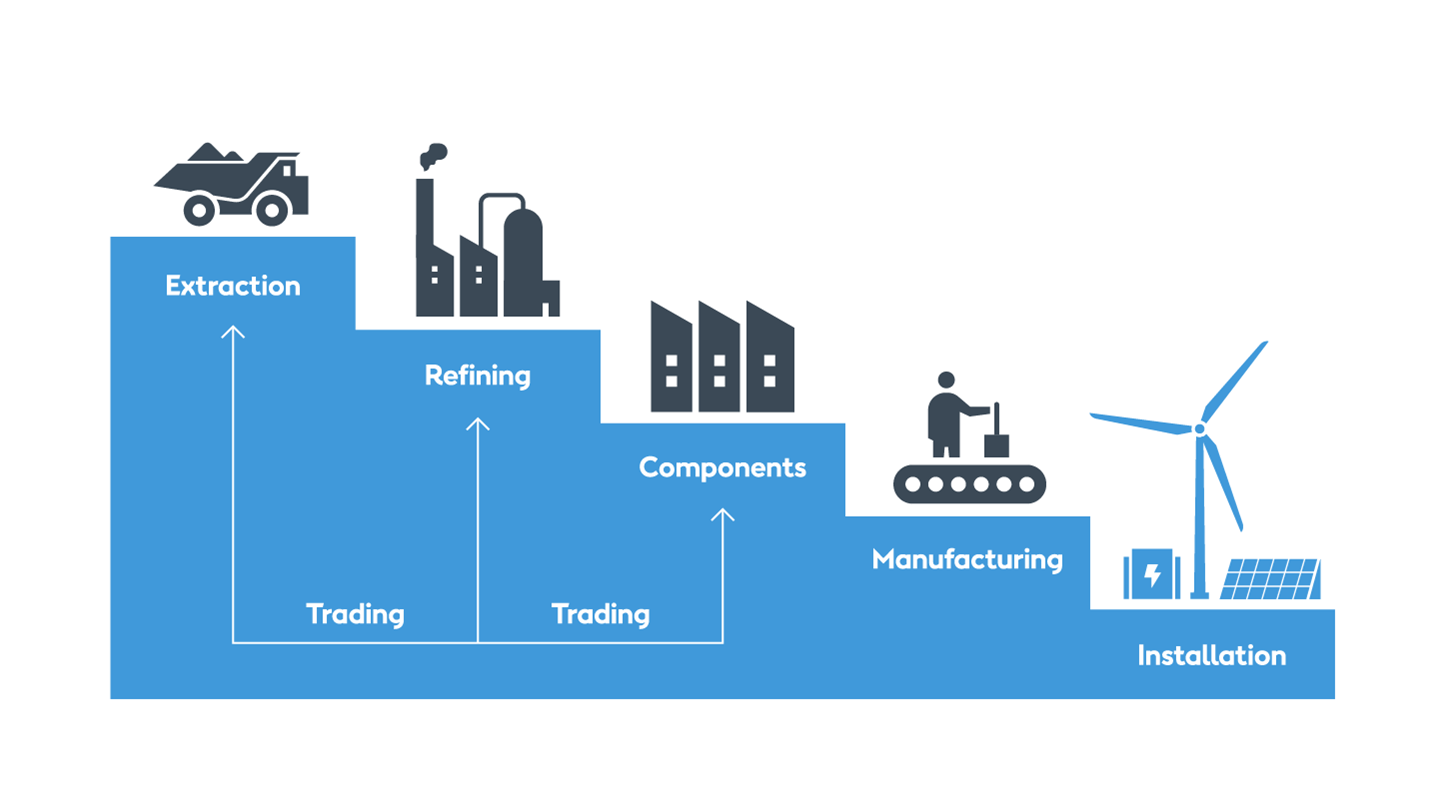We’re working closely with our suppliers and industry partners to promote responsible metal and mineral sourcing to provide the materials we need for the green energy build-out.
Why is it important to source metals and minerals responsibly?
Metals form a crucial part of our renewable energy assets, including rare earth elements for wind turbine magnets, copper for transportation cables, and lithium for batteries. Building an offshore wind farm requires more metals compared with building, for example, a gas-fired power station with a similar capacity.
"
Our renewable energy assets are dependent on metals, including rare earth elements, copper, and lithium – materials with long, complex supply chains, often mined in countries with a high likelihood of negative human rights impacts.
We believe that the growth of renewable energy shouldn’t come at the expense of human rights, neither in our own operations nor in our supply chains.
Like those in the tech and automotive industries, we in the renewable energy sector need to actively guard against any harmful effects the mining of these metals and minerals could have on people and the environment.
What we know: Potential adverse effects
The mining industry can bring economic benefits to the countries where metals and minerals are extracted, for example through creating jobs and tax revenue, which can be used to improve infrastructure.
However, mining can also have unwanted side effects, including pollution, the displacement of communities, precarious working conditions, and effects on biodiversity.
We’re not directly involved in the mining of metals and minerals, nor do we have direct control over the conditions under which they’re mined, because this work occurs deep in our supply chains. However, as an end user, we promote responsible and sustainable practices and develop ways of sourcing these metals more responsibly.
Simplified supply chain for renewable energy products

What are we doing?
Supply chains tend to be long and complex. If we’re to address any risks, we need to work together with other stakeholders, not only across the renewable energy sector, but also in other sectors.
Our metals and minerals sustainability programme covers ten metals with the highest risk of adverse social and environmental impacts that end up in our wind turbines, foundations, cables, components, solar panels, or energy storage systems: cadmium, cobalt, copper, iron, lithium, manganese, nickel, rare earth metals, silicon, and tellurium.
Our work has three strategic pillars:
- Supplier engagement
We engage with key suppliers based on the OECD due diligence guidance on responsible mining to understand if and how our suppliers i) build strong management systems, ii) assess supply chain risks, and iii) implement strategies to respond.
- Supply chain transparency The lack of supply chain transparency is a key challenge for us. To improve this, we work with first-tier suppliers and industry partners and explore technological opportunities to increase traceability.
- Industry partnerships We engage with multi-stakeholder initiatives such as the Initiative for Responsible Mining Assurance (IRMA) and the International RBC Agreement for the Renewable Energy Sector to work on shared solutions.
Engaging with our suppliers and industry partners has shown us that there’s momentum to address risks relating to the mining of the metals and minerals that fuel the renewable energy transition.
However, it’s also brought home to us the full extent of the challenge. We’re committed to taking on this challenge and to working together with others to ensure that the growth of renewable energy is beneficial, and sustainable, for everyone involved.
Latest updates
Through a pilot at one of our UK offshore wind farms, we've enhanced visibility into copper sourcing and strengthened our ability to identify and address supply chain risks, including forced labour and other social and environmental concerns related to copper mining and identified Chile and Indonesia as origins of copper. This initiative also informs our discussions with partners to improve traceability. Looking ahead, we plan to extend our blockchain pilot to include other key materials, such as steel. In direct dialogues with suppliers, we have already identified iron ore coming from Canada, Australia and Brazil.
For more information, please see our annual report 2024, section ‘E5: Resource use and circular economy’, ‘S2: Workers in the value chain’ and read more here: Asset-specific LCAs for supply chain emissions | Ørsted
Key information
Partnerships
In addition to close collaboration with suppliers and industry partners, we also work with others in multi-stakeholder settings such as the Initiative for Responsible Mining Assurance (IRMA) and the International RBC Agreement for the Renewable Energy Sector.International frameworks
We follow and adhere to several international guidelines and principles for respecting and promoting human rights globally, including:
- OECD Due Diligence Guidance for Responsible Supply Chains of Minerals from Conflict-Affected and High-Risk Areas
- UN Guiding Principles on Business and Human Rights (UNGPs).
Governance
Accountability lies with our Chief Operating Officer.